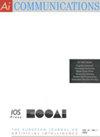An efficient glomerular object locator for renal whole slide images using proposal-free network and dynamic scale evaluation method
IF 1
4区 计算机科学
Q4 COMPUTER SCIENCE, ARTIFICIAL INTELLIGENCE
引用次数: 2
Abstract
In the diagnosis of chronic kidney disease, glomerulus as the blood filter provides important information for an accurate disease diagnosis. Thus automatic localization of the glomeruli is the necessary groundwork for future auxiliary kidney disease diagnosis, such as glomerular classification and area measurement. In this paper, we propose an efficient glomerular object locator in kidney whole slide image(WSI) based on proposal-free network and dynamic scale evaluation method. In the training phase, we construct an intensive proposal-free network which can learn efficiently the fine-grained features of the glomerulus. In the evaluation phase, a dynamic scale evaluation method is utilized to help the well-trained model find the most appropriate evaluation scale for each high-resolution WSI. We collect and digitalize 1204 renal biopsy microscope slides containing more than 41000 annotated glomeruli, which is the largest number of dataset to our best knowledge. We validate the each component of the proposed locator via the ablation study. Experimental results confirm that the proposed locator outperforms recently proposed approaches and pathologists by comparing F 1 and run time in localizing glomeruli from WSIs at a resolution of 0.25 μm/pixel and thus achieves state-of-the-art performance. Particularly, the proposed locator can be embedded into the renal intelligent auxiliary diagnosis system for renal clinical diagnosis by localizing glomeruli in high-resolution WSIs effectively.基于无提议网络和动态尺度评价方法的肾小球目标定位器
在慢性肾脏疾病的诊断中,作为血液过滤器的肾小球为疾病的准确诊断提供了重要信息。因此,肾小球的自动定位是未来辅助肾脏疾病诊断的必要基础,如肾小球分类和面积测量。本文提出了一种基于无提议网络和动态尺度评价方法的肾脏全幻灯片图像(WSI)中有效的肾小球目标定位方法。在训练阶段,我们构建了一个密集的无提议网络,可以有效地学习肾小球的细粒度特征。在评价阶段,采用动态尺度评价方法,帮助训练良好的模型为每个高分辨率WSI找到最合适的评价尺度。我们收集并数字化了1204张肾活检显微镜载玻片,其中包含超过41000个带注释的肾小球,这是我们所知的最大的数据集。我们通过消融研究验证了所提出的定位器的每个组成部分。实验结果证实,通过比较f1和运行时间,该定位器在分辨率为0.25 μm/像素的wsi中定位肾小球的性能优于最近提出的方法和病理学家,从而达到了最先进的性能。特别地,该定位器可以嵌入肾脏智能辅助诊断系统中,通过高分辨率wsi有效定位肾小球,进行肾脏临床诊断。
本文章由计算机程序翻译,如有差异,请以英文原文为准。
求助全文
约1分钟内获得全文
求助全文
来源期刊

AI Communications
工程技术-计算机:人工智能
CiteScore
2.30
自引率
12.50%
发文量
34
审稿时长
4.5 months
期刊介绍:
AI Communications is a journal on artificial intelligence (AI) which has a close relationship to EurAI (European Association for Artificial Intelligence, formerly ECCAI). It covers the whole AI community: Scientific institutions as well as commercial and industrial companies.
AI Communications aims to enhance contacts and information exchange between AI researchers and developers, and to provide supranational information to those concerned with AI and advanced information processing. AI Communications publishes refereed articles concerning scientific and technical AI procedures, provided they are of sufficient interest to a large readership of both scientific and practical background. In addition it contains high-level background material, both at the technical level as well as the level of opinions, policies and news.
 求助内容:
求助内容: 应助结果提醒方式:
应助结果提醒方式:


